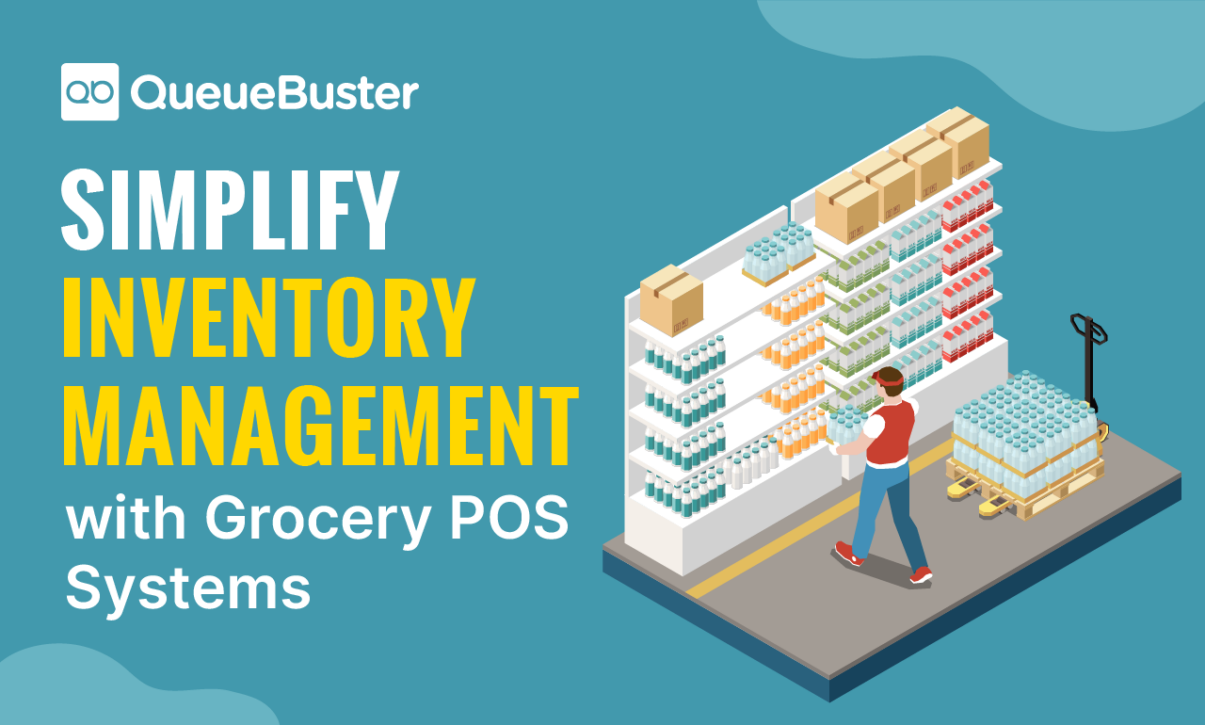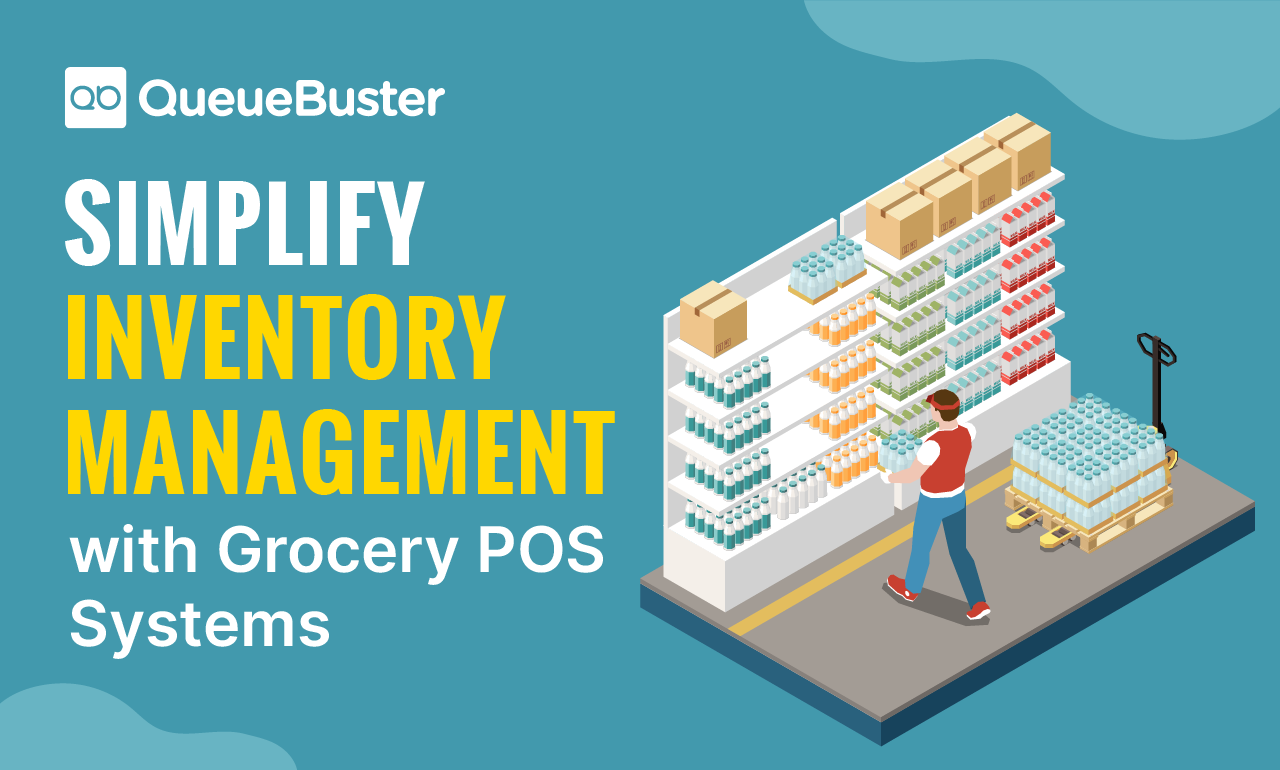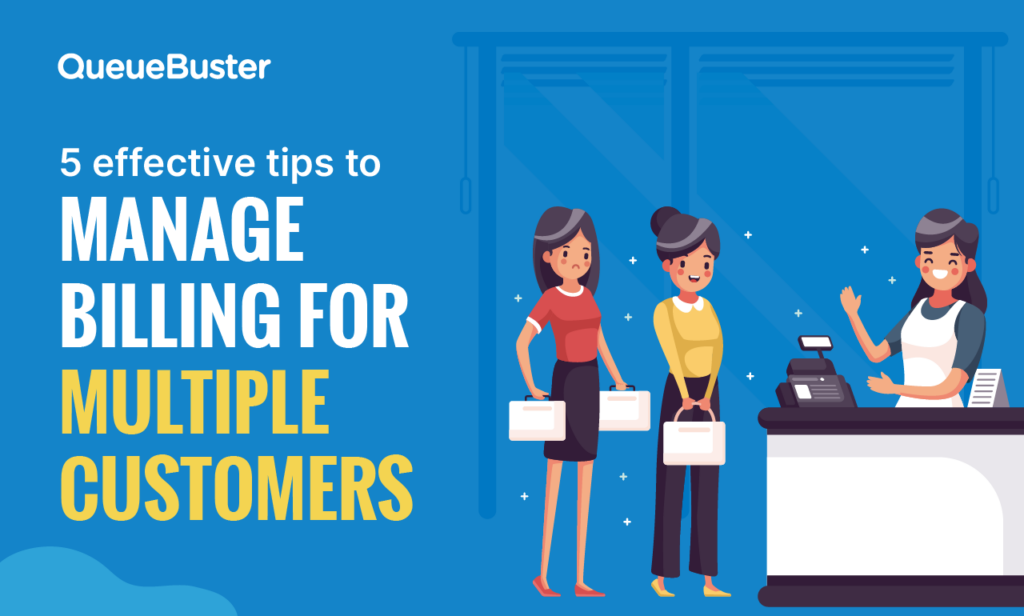
Switch to Grocery POS System for Easy Inventory Management
Switch to Grocery POS System for Easy Inventory Management

By QueueBuster Team Published: July 2nd, 2024
India’s retail market is booming, with an estimated worth of nearly $700 billion and projected growth to $1 trillion over the next few years! While the majority of this market is currently unorganized, consisting of local mom-and-pop shops, these stores have a rich history and a strong foundation of trust within their communities.
In fact, these humble kirana stores have become the backbone of the Indian grocery market, remaining the go-to choice for customers despite the rise of organized retail and e-commerce.
If you are an owner of a grocery store, take pride in the fact that businesses in this space have proved to be incredibly durable and continue to thrive, delivering top-notch service and convenience to consumers across the nation. All that is needed to stay relevant now is to become a part of the digital economy.
A simple Grocery Management Software from a pioneering company like QueBuster can help manage your inventory in a more organized manner to compete with the online surge.
Inventory management for supermarkets and grocery stores refers to the process of controlling and monitoring the stock of products in the store. This involves tracking the movement of goods from the supplier to the store shelves and managing stock levels to ensure that products are available for customers to purchase when they need them.
What Does Inventory Management for Groceries Include?
Stock Tracking
Stock tracking involves monitoring the movement of products from the supplier to the store, as well as their movement within the store. This includes keeping track of the quantity, location, and condition of products. Stock tracking can be done manually, but most supermarkets and grocery stores use Grocery Billing Software to automate this process.
Error: Contact form not found.
Replenishment
Replenishment involves ordering new stock when levels of a particular product are running low. This ensures that the store has enough products to meet customer demand. Replenishment orders can be placed automatically using Supermarket Billing Software or manually by store staff.
The timing of replenishment orders is critical, as ordering too early can result in excess inventory, while ordering too late can result in stockouts and lost sales.
Forecasting
Forecasting involves analyzing historical sales data to predict future demand for products. This helps supermarkets and grocery stores to plan inventory levels and ensure that they have enough stock to meet customer demand without having excess inventory.
This analysis can also help stores to identify trends in customer preferences and adjust their inventory accordingly. Depending on the manual process, stores cannot efficiently analyze sales data and make informed decisions about inventory levels.
Shrinkage management
Shrinkage refers to the loss of inventory due to theft, damage, or other causes. Shrinkage can have a significant impact on a store’s profitability, so it’s important to have systems in place to manage it. This includes measures such as security cameras, employee training, and regular stock checks.
Grocery POS Software is an essential tool for Inventory management
- Grocery POS software has become an essential tool for effective inventory management in supermarkets and grocery stores. With its real-time inventory tracking, automatic reordering, sales reporting, shrinkage tracking, and forecasting features.
- Grocery Management Software from a company like QBuster can help stores to optimize their inventory levels, reduce waste, avoid stockouts, and improve profitability
Benefits of switching to a Grocery POS system
Real time Inventory tracking

Grocery Store POS System enables real-time inventory tracking, which means that stores can track stock levels as sales are made. This allows stores to keep track of stock levels and reorder products in a timely manner, reducing the risk of stockouts.
For example, if a supermarket notices that the stock levels for a certain product are low, they can quickly replenish the stock to ensure that customers can find what they are looking for. This also helps to minimize excess inventory, as stores can order only the amount of products they need.
Automatic reordering
Automating the reordering process by generating purchase orders when stock levels fall below a certain threshold becomes a breeze with Grocery Store POS System. This reduces the risk of running out of products and allows stores to ensure that they always have enough stock on hand to meet customer demand.
For example, if a grocery store uses a POS system and notices that the stock level of milk is running low, the system can automatically generate a purchase order for more milk from the supplier.
Insights into sales
Sales reports provide valuable insights into which products are selling well and which are not. This information made available through Grocery Store POS System can be used to adjust inventory levels and ensure that stores have the right products on their shelves at the right time.
For example, if a supermarket sees that a particular brand of cereal is selling quickly, it can stock more of that brand to meet the demand.
Keeping track of the shrinkage
Grocery billing software can also help to track shrinkage by identifying discrepancies between inventory levels and sales data. This helps stores to identify areas where shrinkage is occurring and take corrective action.
For example, if a grocery store sees that there is a discrepancy between the inventory levels of a particular product and the sales data, they can investigate to determine the cause of the discrepancy.
Predicting demand
Supermarket Billing Software includes forecasting tools that use historical sales data to predict future demand for products. This helps stores to plan inventory levels and ensure that they have enough stock to meet customer demand without having excess inventory.
For example, if a supermarket sees demand for a certain product increase during a festival, it can stock the item based on historical data at that point of the year.
Decide the minimal threshold limit
Let’s talk about an important aspect of inventory management: setting up minimum stock threshold limits. This refers to the minimum amount of inventory you should always have in your warehouse to handle unexpected sales spikes.
By keeping this threshold in mind, you can ensure that you always have enough stock on hand to meet demand and avoid lengthy fulfilment times, which can harm your reputation.
Effective handling of residual inventory
The stock that remains unsold at the end of a season has to be managed. For instance, if you sell woollen socks, you may have a surplus once winter is over. To effectively manage and reduce this type of inventory, you can adopt a useful strategy.
One way is to create season codes with style numbers when you enter the items into your Grocery Management system. This simple step can help you analyze sales and seasonal inventory, allowing you to better plan and prepare for future seasons. So, next time you’re dealing with residual inventory, consider using season codes and style numbers to keep your stock under control.
As a grocery store owner, you are well aware that inventory is the lifeline of your business. By following these best practices and ensuring you always have the desired level of products, you can hope to never have the misfortune of turning away the customer and maintain the upward trajectory of growth.
How to Train Hypermarket Staff to Use POS Software Effectively
Go digital with the Grocery POS system
There is no point in spending your valuable time tediously managing your inventory when you could be growing your business.
Error: Contact form not found.
By implementing a top-notch inventory management software or Grocery POS system from Quebuster, you can easily automate many of your processes, gain valuable insights into your inventory movement, and expand your reach to new locations and markets with ease.
This means less hassle, fewer mistakes, and more time for you to focus on what really matters – boosting your productivity and driving your business forward. So why wait?
Make the switch to a high-quality QueueBuster inventory management system today and see the difference for yourself.
Popular Posts

Why Table Ordering and QR-Based Menus Are Booming in UAE Restaurants
The UAE restaurant industry is evolving faster than ever. From luxury fine […]

5 Effective Tips To Manage Billing For Multiple Customers
Managing billing for multiple customers, especially during peak business hours, can be […]